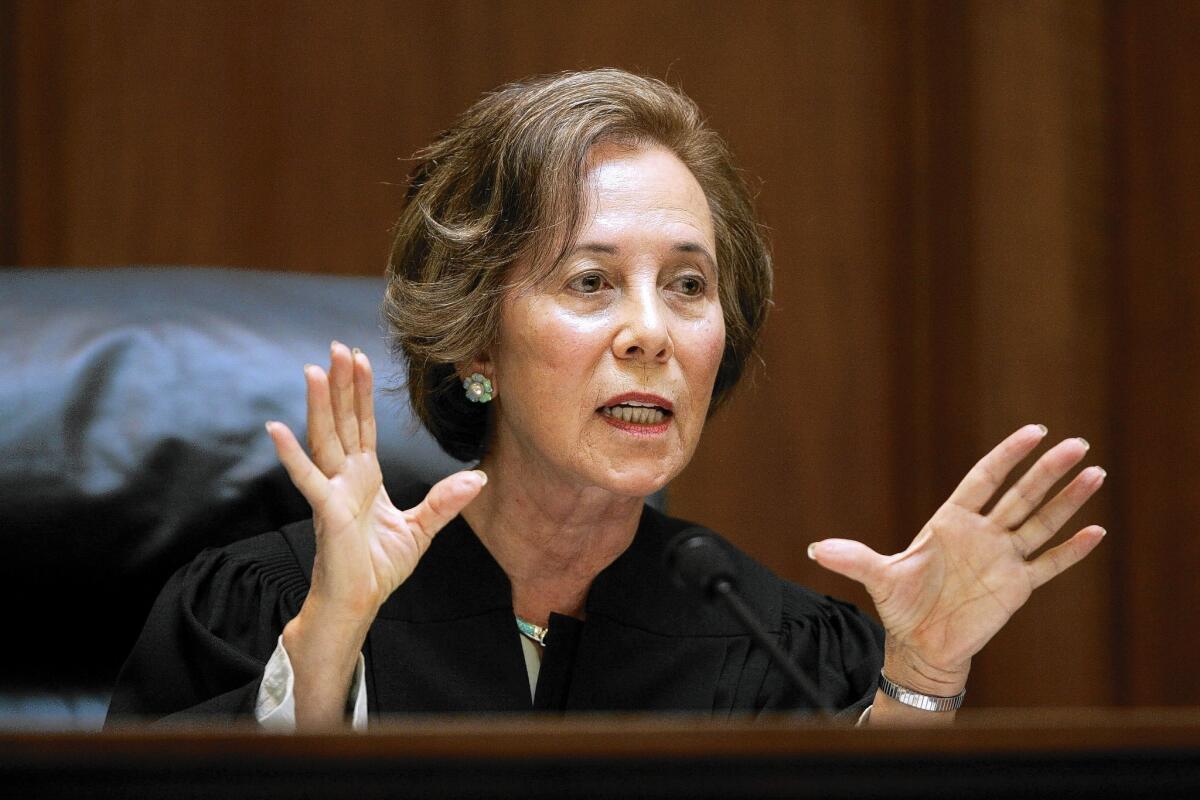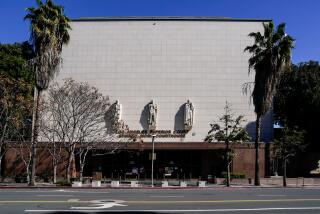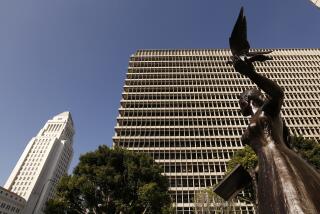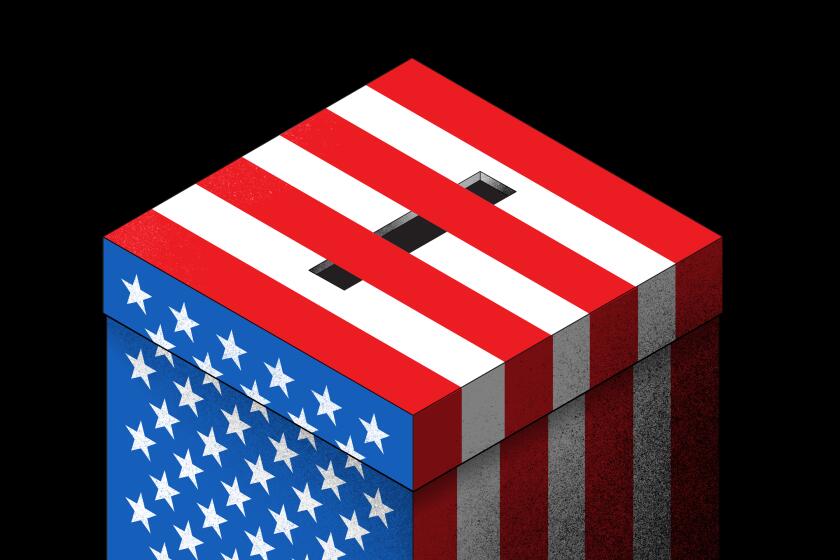California Supreme Court headed for change

SAN FRANCISCO — The California Supreme Court is headed for change.
Dominated for decades by Republicans, the state’s most powerful court may soon be remade by Democratic Gov. Jerry Brown if, as expected, he wins another term.
Three of the court’s seven justices, including the two most conservative, are in their 70s. Brown is already gearing up to make his second appointment this term, to replace Justice Joyce L. Kennard, who has just retired. Though a moderate, Kennard was unpredictable.
“The replacement of Kennard could make a significant difference,” said Santa Clara University law professor Gerald Uelmen. “But it is going to take a couple of more appointments to turn this court around.”
The court, one of the nation’s most influential, has no Latino or African American, or anyone from Southern California. Brown faces political pressure to change that. Judges and lawyers are betting Brown will pick a Latino.
Some analysts said they would not be surprised if he elevated San Francisco appeals court Justice James Humes, an openly gay lawyer who served Brown in the governor’s office and when he was attorney general. “The political pressures on Jerry Brown are one thing,” said Jon Eisenberg, an appellate lawyer who knows the court well. “But he throws in the wild card of doing whatever he feels like doing.”
Brown did just that when he chose Goodwin Liu, then a UC Berkeley law professor, for the court in 2011. Though the appointment won wide praise, Liu’s selection did not address the racial or geographical imbalance of the court. With Kennard retiring, the court will have three white justices and three of Asian heritage.
For more than two decades, the court has had only one Democratic appointee. Now it is Liu. The Republican appointees are considered centrist to conservative, depending on the issue, and regularly defer to the Legislature and the voters.
“It is generally a court that is not wanting to do too much too fast,” said UC Davis law professor Vikram Amar.
The Republican court’s boldest move occurred in 2008, under retired Chief Justice Ronald M. George. Joined by three justices, George wrote a ruling that overturned California’s former same-sex marriage ban.
A year later, the court decided 6-1 to uphold Proposition 8, the voter initiative that reinstated the marriage ban. The dissent came from the court’s sole Democrat, former Justice Carlos R. Moreno, whom Liu replaced.
If two more justices leave during Brown’s expected second term, the court may have a majority of Democrats and a more liberal bent. Future appointments could come from retirement by the older justices.
Justice Marvin R. Baxter, a Gov. George Deukmejian appointee and the court’s most conservative member, faces a retention election in November for another 12-year term. He is 74. Baxter is believed to be in good health and has homes in San Francisco and Fresno, but he has refused to commit publicly to running in November.
Justice Kathryn Mickle Werdegar, a centrist appointed by former Gov. Pete Wilson, is 78. She has said she will run in November.
Justice Ming W. Chin, a conservative Wilson appointee, is 71. He doesn’t face an election for years, but acquaintances say he has talked about retiring.
“If you add more people like Goodwin Liu, then you are going to make the court definitely more scholarly,” Amar said. “And Jerry Brown is an intellectual guy, so that may be part of his legacy, creating a court that is interested in the ideas behind the law as well as practical results.”
Liu is now the court’s most liberal justice, but he is hardly a firebrand. He frequently votes with the majority and frames his disagreements in respectful, well-researched dissents.
“I think of Goodwin as a careful person,” Amar said. “The decisions he has issued reflect a lot of care and precision. If Goodwin is the prototype, I think you are going to get people who have the credentials to be on the U.S. Supreme Court and who are really interested, not just in the short term, but the long-term consequences of their rulings.”
Brown’s judicial appointments this term have differed from his more “erratic” choices when he was a young governor, Eisenberg said. Brown’s appointments then seemed aimed at making a statement or shaking up the establishment. This time, Brown seems more inclined to make “some really thoughtful, careful and admirable picks,” Eisenberg said.
An advisor to Brown declined to discuss when the governor would replace Kennard or identify the candidates he is considering. Any candidate would have to be vetted before a State Bar committee, and Brown likes to interview candidates for the court personally.
Among contenders mentioned by judges as possible nominees are Thomas Saenz, the Los Angeles-based president and general counsel of the Mexican American Legal Defense and Educational Fund; Stanford University law professor Mariano-Florentino Cuéllar, Jeffrey W. Johnson, an African American state appeals court justice; and U.S. District Judges Edward J. Davila and Yvonne Rogers Gonzalez, both Obama appointees.
Other Latinos whom Brown may be eyeing include: Justice Miguel Márquez, a former county counsel Brown appointed to the Santa Clara County-based state appeals court; Elena Duarte, an appeals court justice based in Sacramento; UCLA Law School Dean Rachel Moran; UC Davis Law School Dean Kevin Johnson; and Court of Appeal Justices Martin Jenkins, Maria P. Rivera and Dennis M. Perluss.
Some analysts noted that the court lacks diversity in legal specialization as well as ethnicity. While three justices are former prosecutors, there are no former criminal defense or public interest lawyers or recent litigators. Dennis Maio, an appellate lawyer, said the court would benefit from appointees who know the reality of legal work, not just theory.
“You do have different experiences being out in the real world dealing with real problems,” said Maio, who worked as an attorney at the California Supreme Court for 20 years. “What I have seen in the court is they are often removed from the practicalities of litigation and what really goes on in the law.”
More to Read
Start your day right
Sign up for Essential California for news, features and recommendations from the L.A. Times and beyond in your inbox six days a week.
You may occasionally receive promotional content from the Los Angeles Times.







